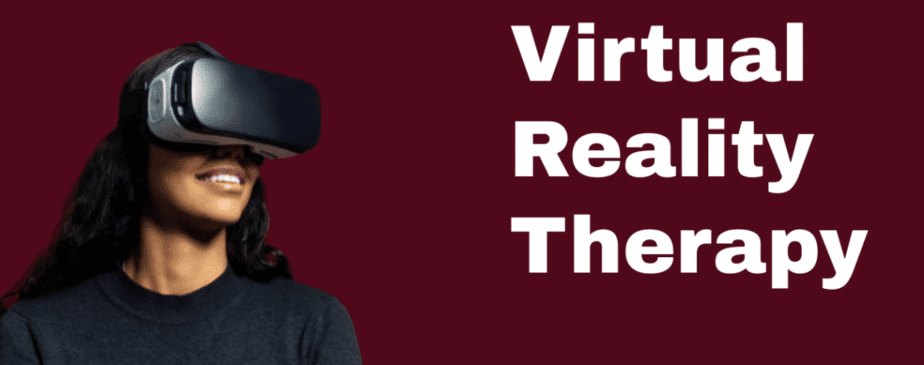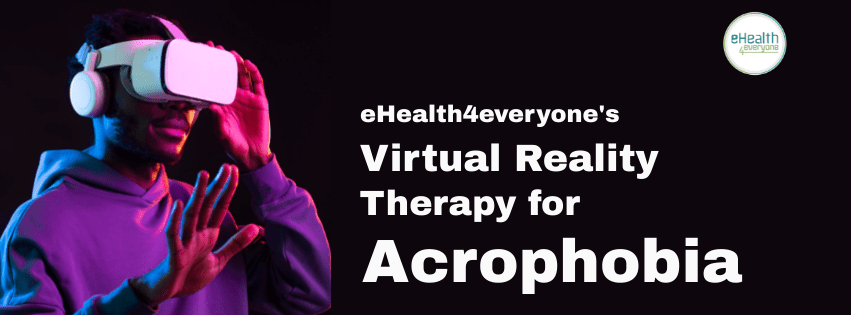Virtual reality (VR) can be used for a lot of things ranging from gaming to medical therapy. After all, the way we perceive the world affects the way we react to it. One particular type of therapy that has potential for growth in the coming years is VR therapy. In this article, we will look at the different elements that make up VR therapy and how it can help people suffering from various disorders.
What is Virtual Reality Therapy?
Virtual reality therapy (VRT), also known as virtual reality immersion therapy (VRIT) is the use of digitally created environments and specially designed tasks to treat a specific ailment. It is designed to isolate the users from their surrounding sensory inputs and give the illusion of immersion inside a computer-generated, interactive virtual environment.
Unlike traditional cognitive behavioural therapy, VR-based treatment may involve adjusting the virtual environment, such as adding controlled intensity smells or adding and adjusting vibrations, and allowing the clinician to determine the triggers and triggering levels for each patient’s reaction.
How Virtual Reality is Used in Therapy
To date, most research on VR has been conducted to explore its potential for treating phobias, social anxiety, obsessive-compulsive disorder, post-traumatic stress disorder (PTSD), eating disorders, psychosis, and substance abuse.
The idea behind virtual reality is that by putting someone into a simulated environment, they will start to have the same thoughts and feelings as they would in real-world situations.
In addition, VRT allows therapists to choose to either go full-force with the most intense stimuli first (a technique called flooding), or they can ease into things by starting with the least anxiety-producing stimuli (a technique called graded exposure).
VRT may also be a helpful tool for treating psychosis. A systematic review of past research suggests that virtual reality-based interventions are safe and well-received by this population. The study found that VRT can improve cognitive, social, and vocational skills in addition to reducing symptoms of auditory hallucinations and paranoia.
Virtual Reality Therapy for Phobia
In the past decade, virtual reality therapy has given clinicians new and innovative ways to help their clients face and then change their reactions to phobias. Most phobias can be classified into animal type, natural environmental type, situational type, or blood-injection-injury type. For example, a phobia of spiders would be classified as an animal type, while a phobia of driving would be classified as a situational type.
While traditional cognitive behavioural therapy has proven to be effective for specific phobias, it comes with certain disadvantages that might discourage patients from seeking treatments. For example, one of the disadvantages that come with systematic desensitization is a lack of control over the environment by the counsellor. Another one is reduced confidentiality which might be a result of the use of locations outside of the therapy office for desensitization.
VRT, on the other hand, involves the use of a fully self-guided smartphone app paired with a headset to immerse participants in virtual environments which ensures better protection of client confidentiality, increased safety and control by eliminating unpredictable real-world environments, and so on.
eHealth4everyone’s Virtual Reality Therapy for Acrophobia (Fear of Heights)
Acrophobia is a specific phobia characterized by a fear of heights resulting in the avoidance of situations that would involve being high above the ground, such as in an elevator or an aeroplane. It is a widespread anxiety disorder that affects about 1-in-20 adults. Virtual reality (VR) technology has been used in the psychological treatment of acrophobia since 1995 and has been shown to be an effective treatment option. Numerous studies have shown that VR exposure therapy is an effective treatment for acrophobia and other anxiety disorders.
eHealth4everyone, a digital health enterprise, has developed a virtual reality therapy for acrophobia, which involves the use of a smartphone application paired with a VR headset. The specifically developed smartphone application was designed to have three levels of difficulty, namely: the easy, medium and difficult stages.
In the easy stage, the user appears to be in a simulated high corridor. The scene is replayed till the user gets acclimatized. In the medium stage, the user is introduced to a more difficult simulated environment – a ride in a transparent elevator. In the difficult stage, the user, who has become acclimated to the high corridor and transparent elevator ride, is introduced to a roller coaster ride. All these can be done at the user’s pace and in their comfort space.
Virtual reality therapy is a great option for many patients, as the virtual world gives them a chance to immerse themselves in environments that may help them resolve their issues.
To get started, visit our website at www.ehealth4everyone.com/vrdiscount to learn more. You can also send us an email at bizdev@e4email.net to request a demo of the product.
External links
http://www.psychiatrictimes.com/anxiety/exposure-therapy-anxiety-disorders#sthash.eT8Klkl5.d5puf
https://en.wikipedia.org/wiki/Flooding_(psychology)
https://en.wikipedia.org/wiki/Systematic_desensitization
https://mental.jmir.org/2022/2/e28502
https://www.sciencedirect.com/science/article/abs/pii/S0887618509000280
http://www.ehealth4everyone.com/vrdiscount




